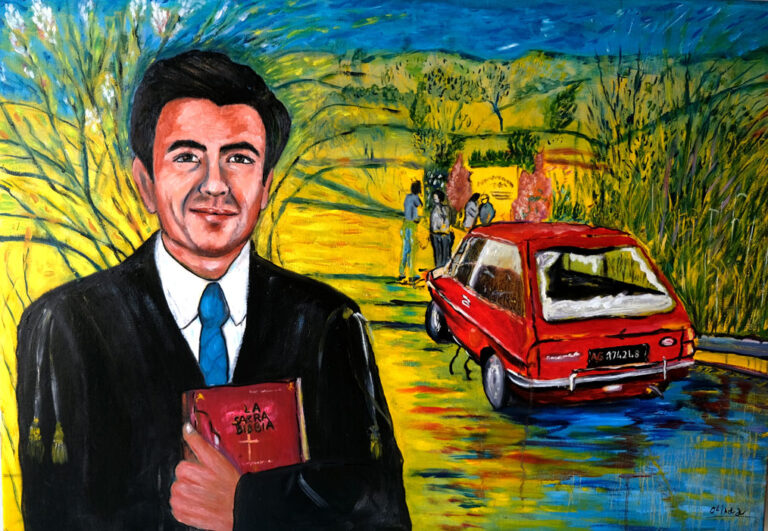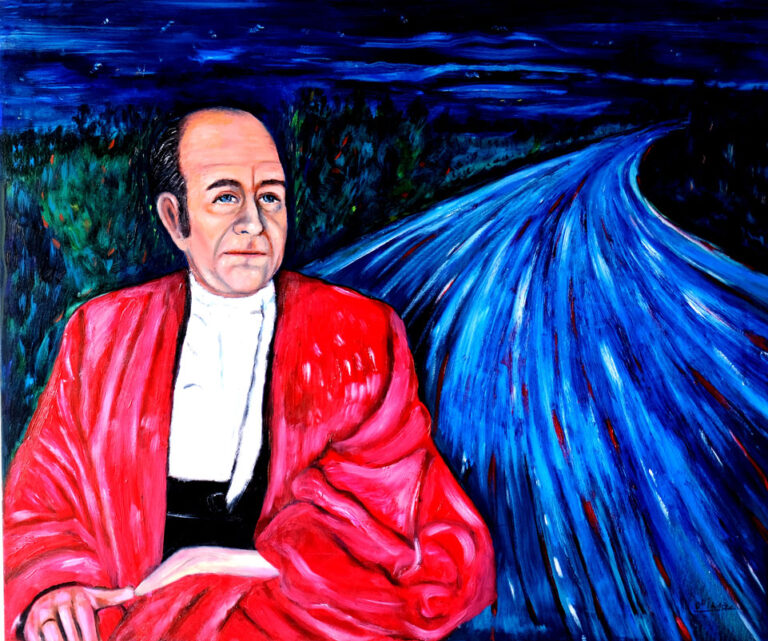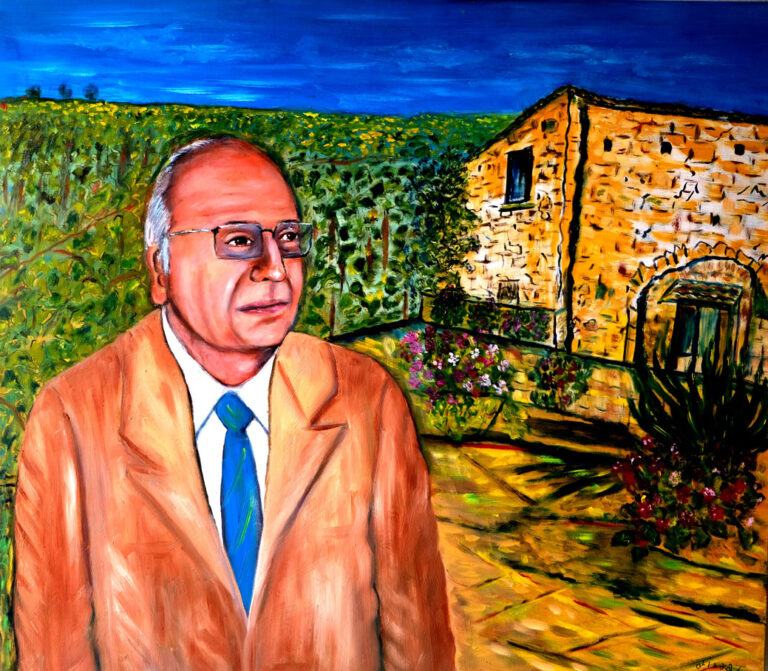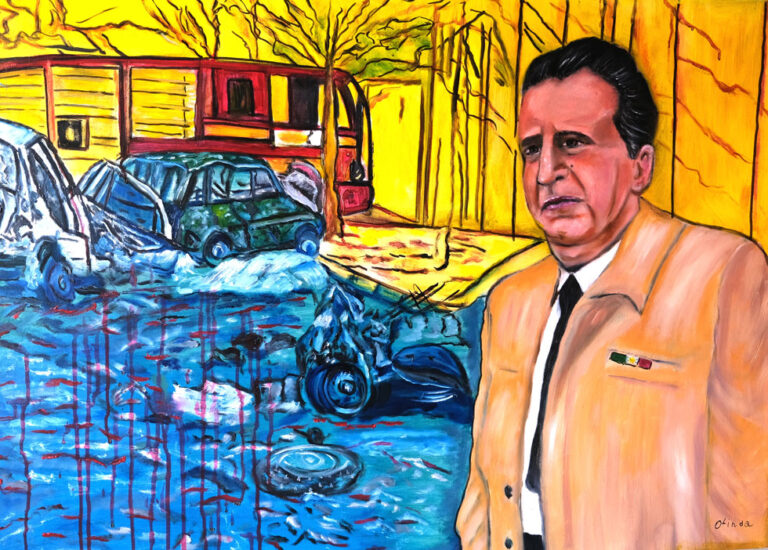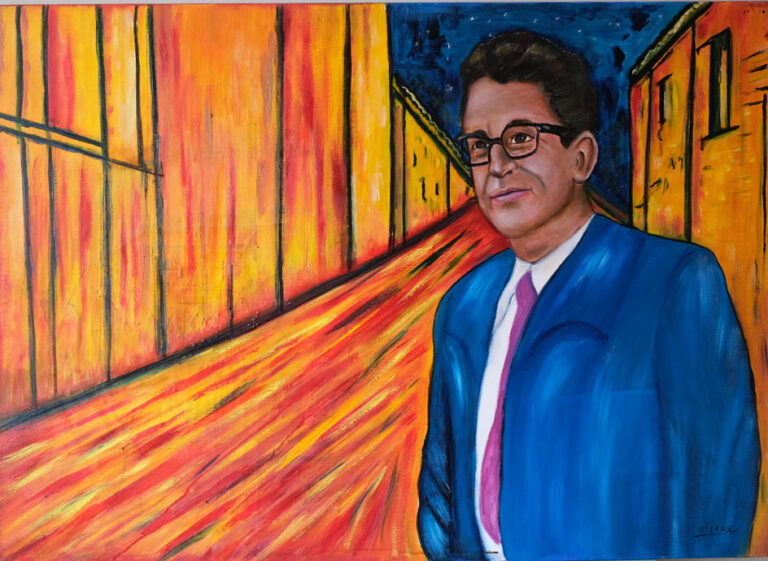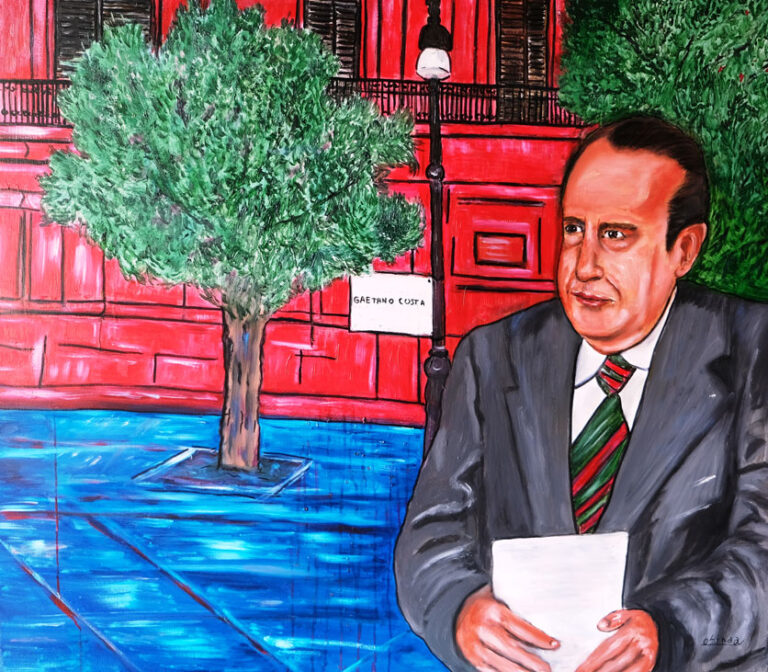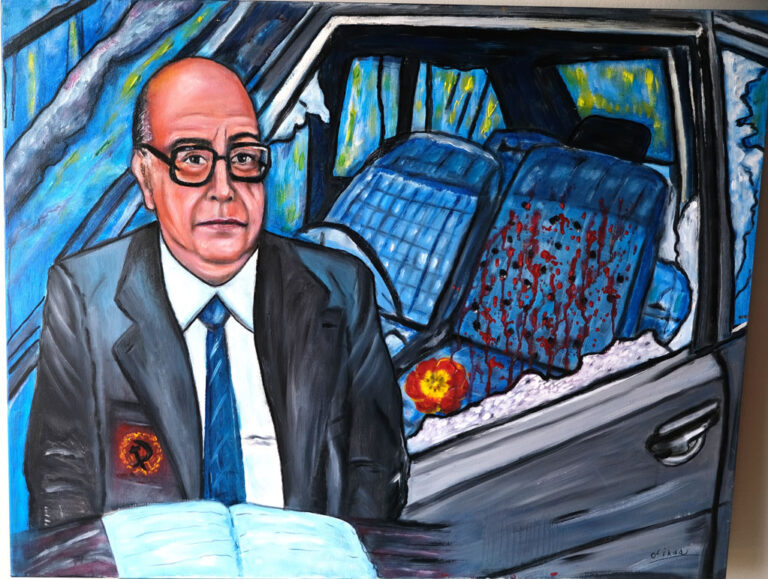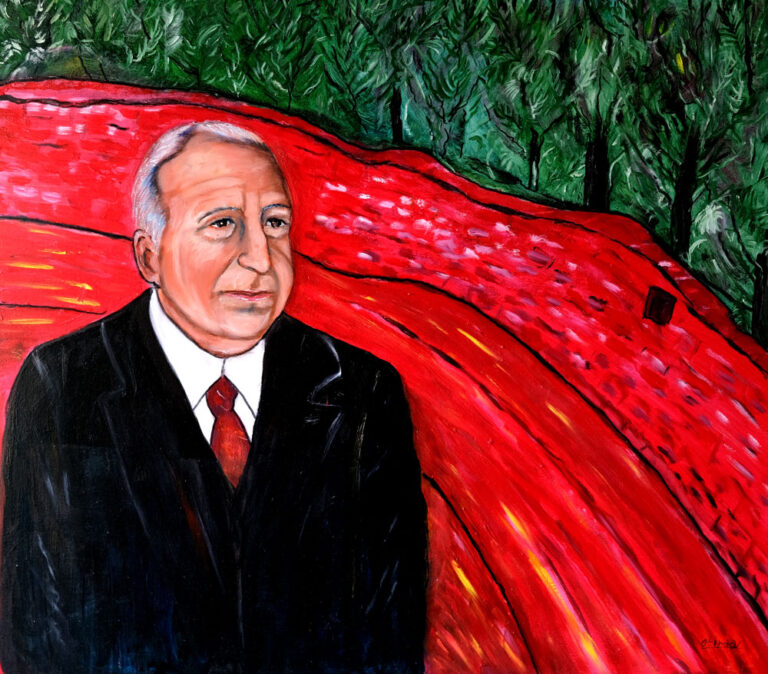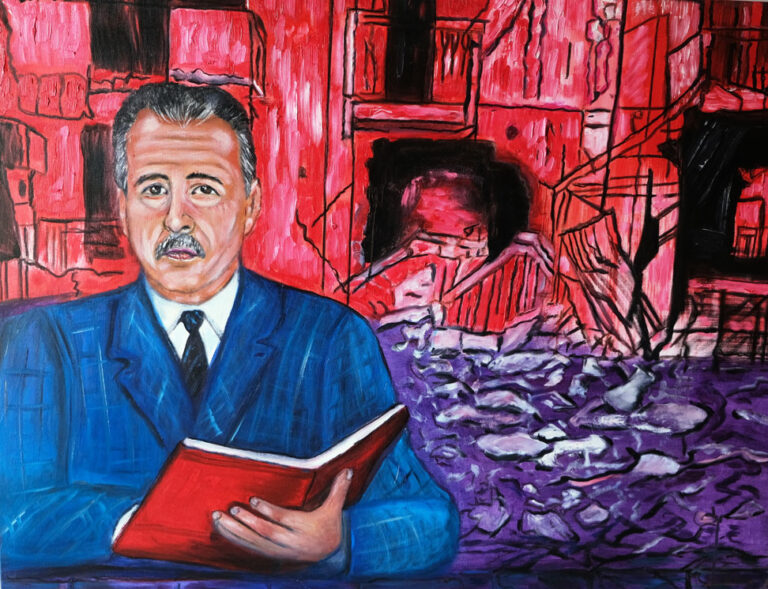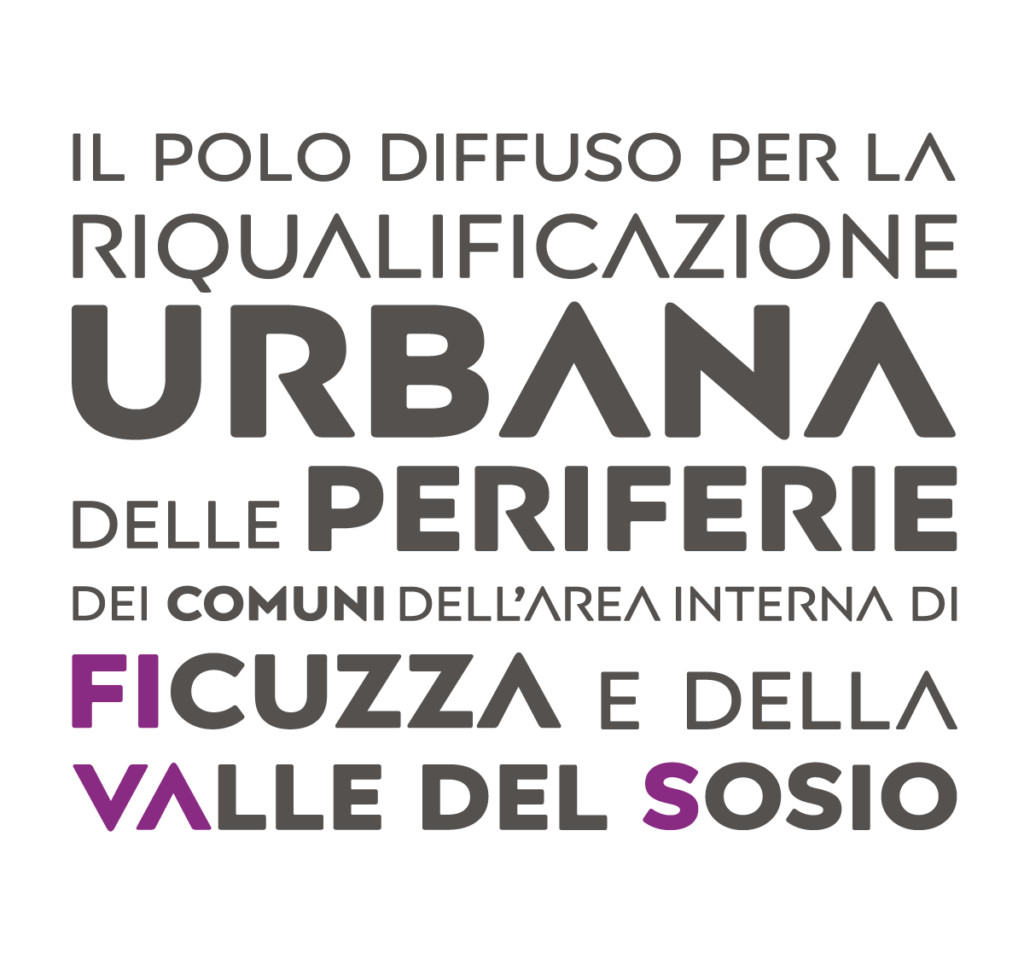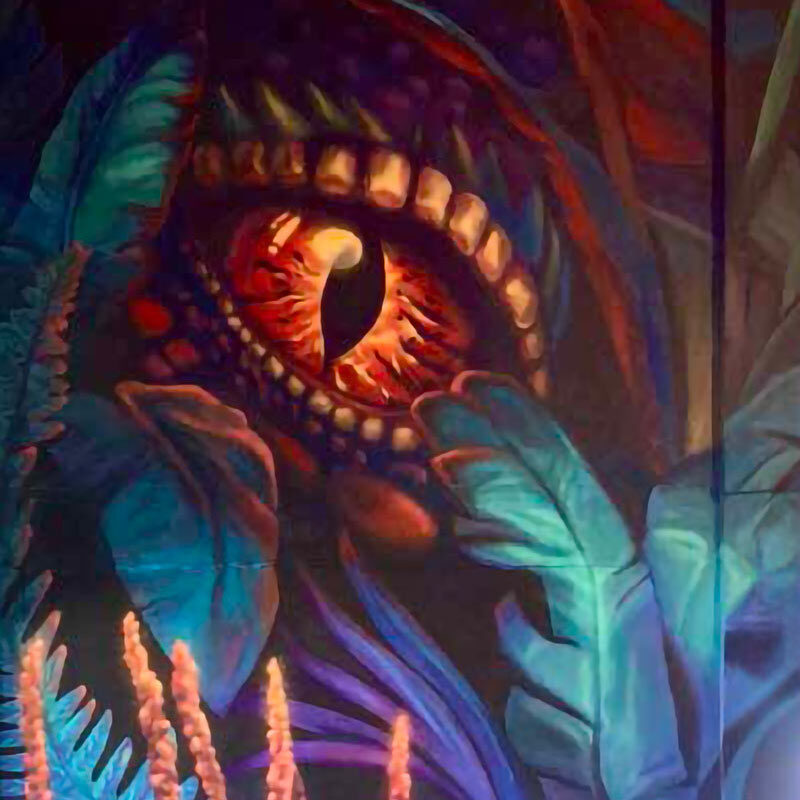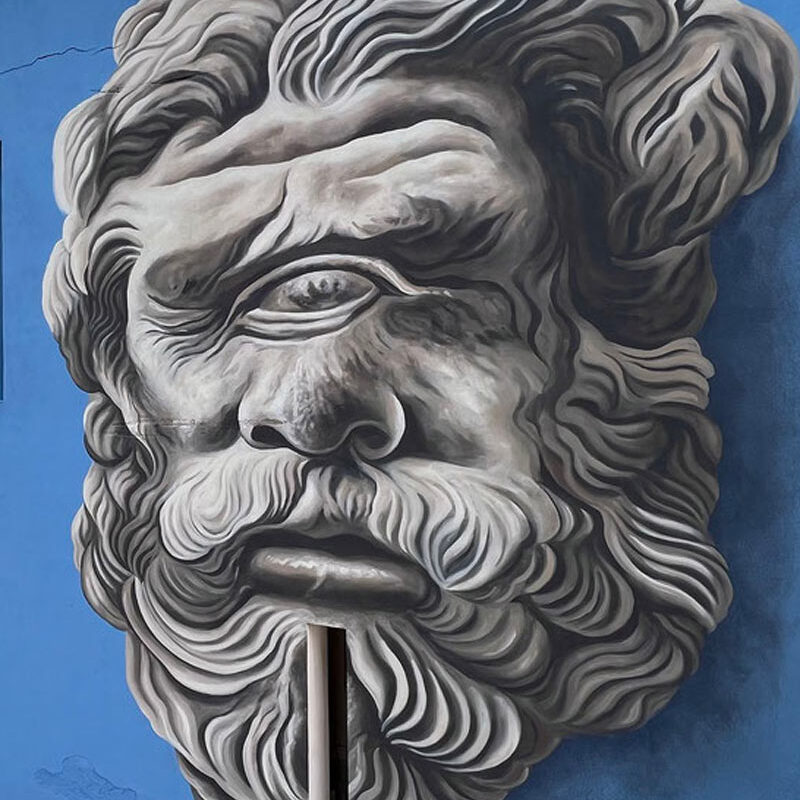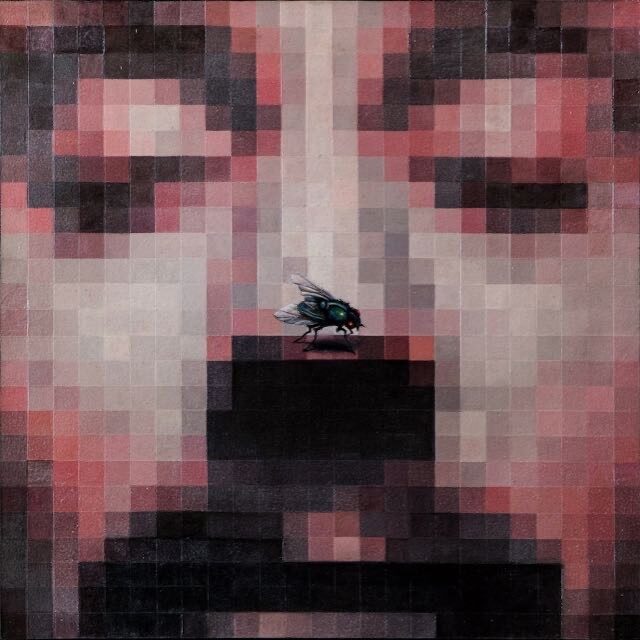The permanent exhibition “Memoriam Iudicorum”, at the International Center for Documentation on the Mafia and the Anti-Mafia Movement in Corleone, presents eleven portraits of the judges murdered by the mafia in Sicily. The artist Olinda Lo Presti, an expressionist painter from Palermo, with these portraits recalls the tragic period in which “Cosa Nostra” killed over 500 innocent victims, including important figures of the State, the judiciary and culture. Between 1971 and 1992, the Sicilian judiciary was the target of unprecedented murders and attacks. After the murder of the prosecutor Pietro Scaglione in 1971, followed by the killings of Mario Francese, Michele Reina, Boris Giuliano and Cesare Terranova in 1979. In 1980 Piersanti Mattarella, Emanuele Basile and Gaetano Costa were murdered. After the Rognoni-La Torre Law of 1982, mafiosi intensified their retaliation against magistrates, as demonstrated by the murders of Giangiacomo Ciaccio Montalto, Rocco Chinnici and Antonino Saetta. In 1988, judge Alberto Giacomelli and the young Rosario Livatino were killed. The Capaci and Via d’Amelio massacres in 1992, which caused the death of judges Giovanni Falcone, Francesca Morvillo and Paolo Borsellino, marked the culmination of this series of attacks. Olinda Lo Presti interprets these murders not only as targeted attacks, but as attempts to delegitimize justice and law. His portraits, with warm colors and backgrounds that recall the places of the murders, pay homage to these heroes, underlining their humanity and the drama of that period.
Biographical Profile
Olinda Lo Presti, initially oriented towards abstract expressionism with warm chrome and mixed techniques, then evolved her style towards figurative expressionism, focusing on urban visions of Palermo and Sicilian landscapes. Her work reflects a constant search for the female “I”, explored through various moods and personal vicissitudes. Among his works there are ironic and lyrical elements, as in the double self-portraits that compare the young Olinda with her older version. Recently, he has oriented his research towards a neorealist expressionism, culminating in the “Memoriam Iudicorum” cycle, which represents a civic cry in the context of his artistic career.

